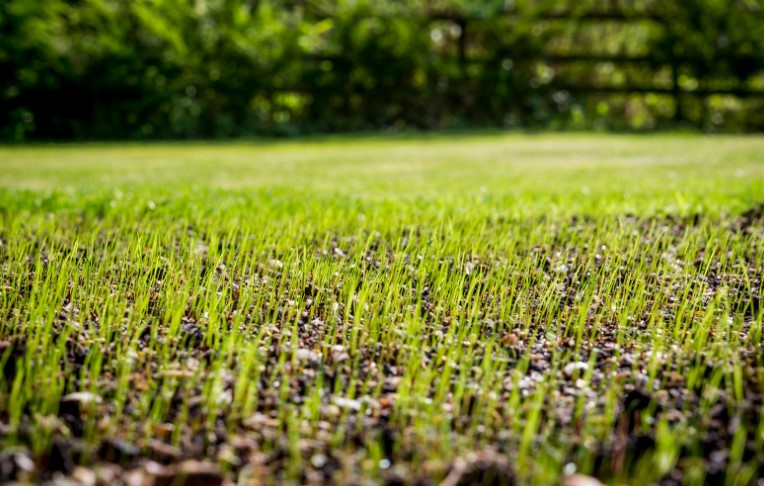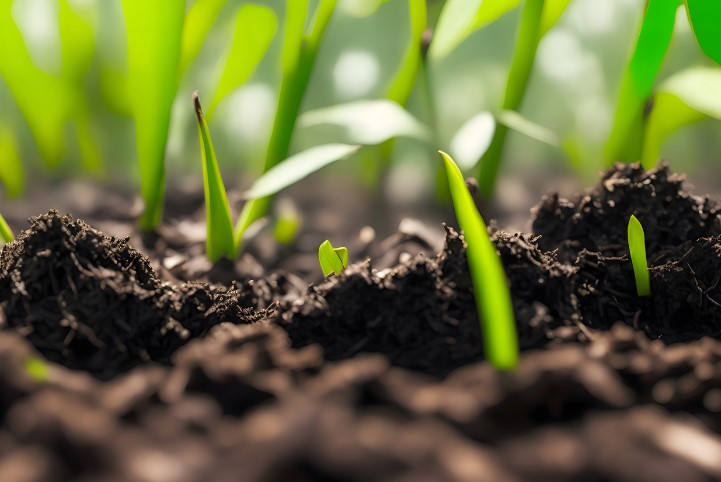- What Factors Affect Grass Growth?
- When Does Grass Stop Growing in the UK?
- How Does Seasonal Change Affect Lawn Growth?
- What Should I Do Before Grass Stops Growing?
- How to Care for Your Lawn During Winter Dormancy?
- Conclusion
- Table : Comparing Grass Growth In Different Seasons
- Frequently Asked Questions About Grass Stop Growing
Grass growth is something we all monitor closely, especially as the seasons change. As someone who takes pride in a well-maintained lawn, it’s important to know when does grass stop growing so you can adjust your lawn care routine accordingly.
In the UK, grass growth is largely influenced by temperature and seasonal shifts, particularly in autumn and winter. In this guide, I’ll walk you through exactly when grass stops growing and what steps you should take to keep your lawn healthy year-round.
What Factors Affect Grass Growth?
Grass growth depends heavily on three key factors: temperature, sunlight, and moisture.
During the spring and summer, warmer temperatures, longer daylight hours, and frequent rainfall create ideal conditions for your lawn to thrive.
But as autumn sets in, these conditions begin to change.
- Temperature: The most significant factor in grass growth is temperature. When it drops below 10°C, grass growth slows down. As temperatures fall further, particularly under 5°C, growth halts completely.
- Sunlight: Shorter days mean less sunlight, which grass needs for photosynthesis. Without enough sunlight, your lawn’s growth naturally slows.
- Moisture: While rain is essential for growth, too much or too little can be problematic. Autumn tends to bring more rainfall, which is generally good for grass, but as winter approaches, frost and snow can limit moisture absorption.
By understanding how these factors influence your lawn, you can better predict when to expect changes in growth.

When Does Grass Stop Growing in the UK?
In the UK, grass typically begins to slow its growth in late autumn, around October. The further north you are, the earlier this process might start, due to cooler temperatures.
Grass stops growing entirely by the time winter arrives, usually around late November to early December.
Grass growth in the UK halts when the temperature consistently stays below 10°C. At this point, your lawn essentially goes into dormancy, conserving energy until warmer weather returns in spring.
Key Points to Remember:
- Grass starts slowing down in autumn as temperatures dip.
- Growth typically stops in winter when temperatures drop below 5-10°C.
- Northern areas of the UK may see earlier dormancy than southern regions.
How Does Seasonal Change Affect Lawn Growth?
What happens during Autumn?
As the weather cools, you’ll notice your grass growing more slowly. Autumn is a crucial time to carry out seasonal lawn care to prepare it for the coming winter months.
You’ll still need to mow during this time, but less frequently than in the summer.
- Mowing can reduce to once every 10-14 days.
- You can carry out fertilization to strengthen the grass before it goes dormant.
- It’s also a good time to aerate your lawn, allowing it to absorb water and nutrients more effectively.
What happens during Winter?
When winter hits, your grass enters dormancy. This means that even if the grass is still green, it isn’t actively growing.
During dormancy, your lawn won’t require any mowing, but you’ll need to take care of it in other ways, such as protecting it from frost and minimizing foot traffic.
- Avoid mowing as the grass won’t be growing.
- Focus on protecting the lawn from winter damage, such as snow mold or frost damage.
- Use this time to maintain your lawn tools for the upcoming spring.
What Should I Do Before Grass Stops Growing?
Before your grass completely stops growing, it’s essential to prepare it for the colder months.
The transition between autumn and winter is the ideal time for these end-of-season lawn care tasks:
- Fertilize your lawn with a winter fertilizer rich in potassium. This strengthens the roots and prepares the grass for winter dormancy.
- Aerate the soil to allow better penetration of water and nutrients. This is especially important before frost sets in.
- Remove thatch—the layer of dead grass and debris—to prevent disease during winter.
- Stop mowing when the grass growth rate is minimal, generally once temperatures dip below 10°C.
By following these steps, you can ensure that your lawn is well-prepared to endure the winter and bounce back come spring.
How to Care for Your Lawn During Winter Dormancy?
Once your grass enters dormancy, your lawn care routine will shift. Although your grass isn’t actively growing, it still needs a bit of attention to stay healthy.
- Avoid Mowing: There’s no need to mow your lawn in winter since the grass has stopped growing.
- Limit Foot Traffic: Walking on dormant grass, especially when it’s frosty, can damage the grass blades, leading to patchy growth in spring.
- Protect Against Frost: Keep an eye out for frost damage. Frost can make the grass brittle, so avoid walking on the lawn during frosty mornings.
- Clear Debris: Even though the grass isn’t growing, it’s still important to keep the lawn clear of fallen leaves and debris, which can lead to mold or pest issues.
By taking these steps, you’ll help your lawn remain healthy throughout the winter, ensuring a quicker recovery once spring arrives.
Conclusion
Knowing when grass stops growing is key to managing your lawn care routine effectively. In the UK, grass growth slows in autumn and typically stops by early winter.
By preparing your lawn with the right seasonal care, you can ensure that it stays healthy and ready to thrive again when spring arrives.
Whether it’s fertilizing in autumn or protecting the lawn during its winter dormancy, these steps will help maintain a lush, green lawn all year round.
Take advantage of the slower growing months to carry out essential lawn care tasks, and you’ll be rewarded with a healthy, vibrant lawn when the warm weather returns.
Table : Comparing Grass Growth In Different Seasons
Here’s a table comparing grass growth in different seasons to help clarify when grass slows down and stops growing in the UK:
| Season | Temperature | Grass Growth Rate | Lawn Care Activities | Mowing Frequency |
| Spring | 10°C – 18°C | Rapid growth | – Fertilize – Aerate – Weed control |
Once every 5-7 days |
| Summer | 18°C – 25°C | Peak growth | – Water frequently – Mow regularly – Apply summer fertilizer |
Once every 7 days (more in heat) |
| Autumn | 10°C – 15°C | Slows down | – Apply autumn fertilizer – Aerate – Remove thatch |
Once every 10-14 days |
| Winter | Below 10°C | Growth stops (Dormant) | – Minimize foot traffic – Clear debris – Protect from frost |
No mowing required until spring |
Frequently Asked Questions About Grass Stop Growing
1. Does grass grow in winter in the UK?
In most parts of the UK, grass stops growing entirely during the winter months. While the grass may still look green, its growth halts due to the colder temperatures.
2. What happens if I mow my lawn in winter?
Mowing a dormant lawn can damage the grass, as the blades are less resilient and more prone to injury during this period. It’s best to avoid mowing until growth resumes in spring.
3. When should I expect my lawn to start growing again in the spring?
Grass growth typically resumes in early spring, around March or April, when temperatures begin to rise above 10°C. At this point, you can start regular mowing and other lawn care activities.



0 Comments